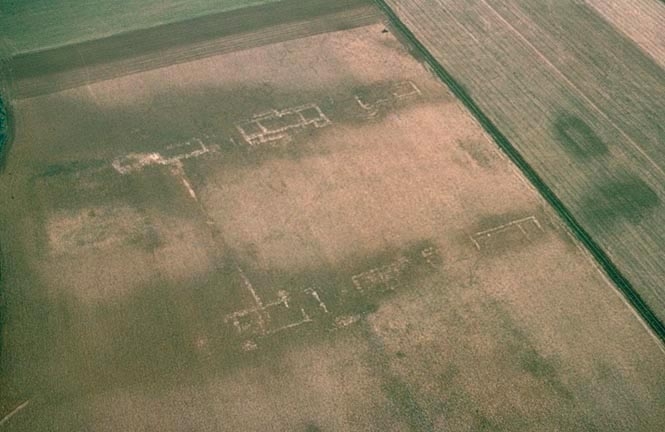- Home
- Clues on the ground
- Ground moisture anomalies
- Dark areas
Each dark zone corresponds to the location of a structure. Their organization around a elongated courtyard is characteristic of a Gallo-Roman villa whose foundations will appear after deep plowing. Béhen (Somme).
Maculiform structures (clayish zone) and linear ones (lines of the foundations of a small Gallo-Roman dwelling). Buigny (Somme).
The same phenomena reveal a Gallo-Roman villa. Miannay (Somme).
Varying levels of dampness in bare ground can take take on a completely difference appearance. In northern France, raw clay has always been used to construct a large portion of walls.
The locations of vanished houses are signaled by the presence of small areas with a higher clay content that retain dampness better. From the air, they can also appear, not as lines (linear structures), but as diffuse patches (maculiformes structures) that are especially visible in contre-jour when the fog clears.
Areas that are rich in clay, ash, and humus allow vanished habitats to be discovered on all types of soil (whether chalky or silty), and the risk of confusion is great. The only solution involves frequent flyovers and test excavations on the ground.
Sometimes, these dark, clayish areas appear simultaneously with the white lines of foundations, like at Buigny (Somme) and Miannay (Somme). In such cases, there is no doubt that we are in the presence of a long-vanished structure.



